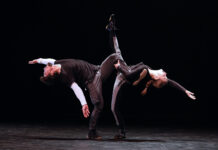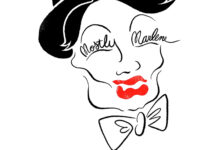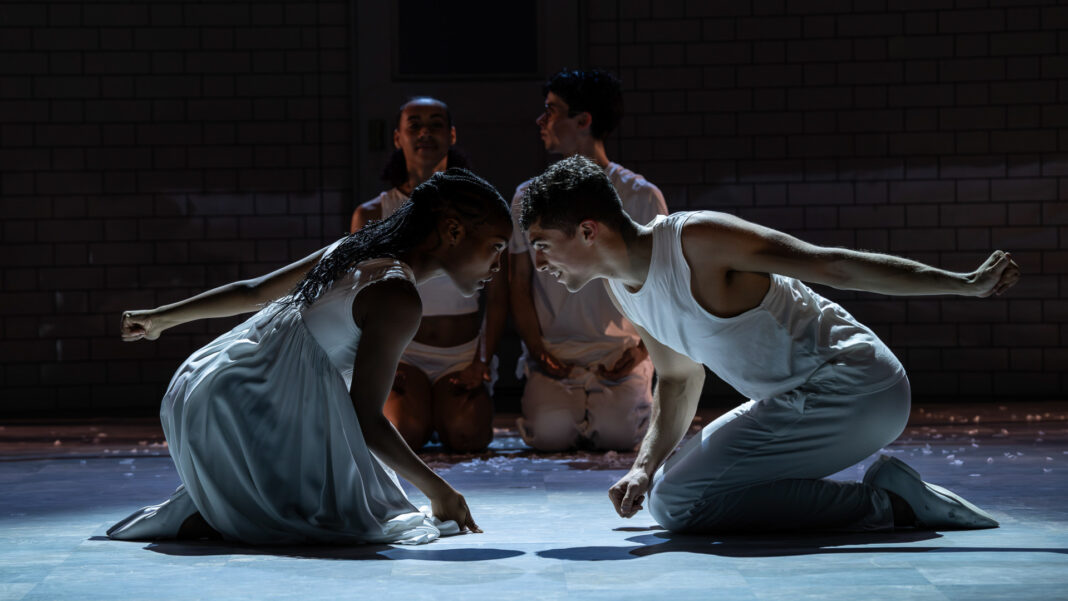In 1597 Shakespeare’s Romeo and Juliet was published. 338 years later, in 1935, Sergei Prokofiev composed his beloved music for a ballet that wouldn’t be performed until 1938. Two years later a revised Romeo and Juliet ballet with choreography by Leonid Lavrosky became the standard ballet that has inspired many other choreographers. Amongst them is Matthew Bourne (the all-male Swan Lake) who relied on his go-to composer/arranger, Terry Davies, to re-work Prokofiev’s music to match his vision for his ballet.
Matthew Bourne’s Romeo and Juliet has its official opening night at the Ahmanson Theater on Wednesday, January 31st where it will play through February 25th. Though the production was first staged in England in 2019, this marks the North American premiere of Romeo and Juliet. After Los Angeles it will be performed in Paris, Tokyo and Seoul.

Two weeks ago I spoke with composer Davies about his approach to adapting Prokofiev’s music (usually performed by a large orchestra) to a much smaller and more intimate ensemble to match Bourne’s concept for his ballet. We also discussed his process of collaborating with Bourne and how music is heard, not just by Davies, but by us all. What follows are excerpts from our conversation that have been edited for length and clarity. To see the full interview, please go to our YouTube channel.
Q: I read a story that was written about you around the time of The Red Shoes where you stated that you have two favorite parts of your collaborations with Matthew Bourne and the first is your early discussions about the works with Matthew. What do you remember about your earliest conversations about Romeo and Juliet?
Matthew’s projects can tend to come from the distant horizon. I kind of smell them coming. There’s no kind of one exposure of what’s going on, so things become clearer as time as time approaches. It’s a slowish process, to be honest. Before we start to work we talk – probably a comparable conversation to the one he has with Lez Brotherston about the sets – about what the concept is, what his take on the story is, and so on. Then when we start to work seriously, I banked a lot of information and then we talk through the drama.
I interviewed Matthew Bourne in 2013. At that time he said, “At some point I’ve got to do Romeo and Juliet, which I’ve just never done.” Can you give me a sense of what that timeline might have been from 2013 to this work debuting in 2019?
I think through those years, Matt usually had a couple of things that he’d like to do, and then it’s a question of what can be done with the various complications. The Red Shoes was a bit of a minefield in terms of rights and so on. So those sort of things play a part. What can we do and so on. I think really it was probably in the year and the year prior we were talking about starting to firm up ideas of how it was going to be.
What is there to do with Romeo and Juliet that hasn’t been done before?
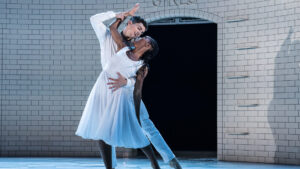
Matthew always works from a character place. He wanted it to be very young. We had done an education project here involving amateur young people in their teens who just were cast. They weren’t dancers from dance schools. They were ordinary kids. It was a very fine experience. I think this was a kind of next step along from that, the people who were a little bit older, but they’re very young dancers. They’re all professionals, of course.
If it’s a more youthful approach, I would assume that is one of the mandates that you have is to give this this score, as beloved as Prokofiev’s work is, a younger sensibility. Could you talk about how you address that?
Yeah. It’s young. When you see the setting this will make more sense. But the majority of the company is young. They are in some unspecified institution. Some of them are definitely mentally frail and they are incarcerated. The score is fantastic, but it’s also lush and routinely would be 75, 80 players. We’re talking about 15 [players], but I didn’t want to do reduction. I didn’t want to just cut down the score. The score is fantastic. It deserves better than that. I really like the idea of going very small and something that was very fragile, very brittle. Like the characters seem to me.
Matthew Bourne’s work requires absolute precision. How much does that influence what you’re doing in relation to his his choreography?
Not very much, to be honest. I don’t get too bound up with those things, really. Everything you just said is absolutely true. But in Romeo and Juliet, more than some of the other pieces, my approach is to lay out some firm boundaries and firm grid pattern for how things are going to proceed. He likes, and encourages, dancers to bring something of themselves to throw a sidelight on a character’s journey. That’s more the case in this than in some of the other productions.
I don’t think about anything physical when I’m working, unless he says I really want to build to something in this particular moment. Then I can I obviously structure it in that way. But I don’t get involved with actual movement. I don’t try to visualize it. What I do is tell the story of the scene that we’re working on,and it makes sense to me and invites movement.
When you’re dealing with a classic score like Prokofiev’s Romeo and Juliet and you’re working with Matthew Bourne, who innovates with everything that he does, where are the decisions made creatively about truncating a score to more expeditiously tell the story, and how much of that is planned out in advance, or is it a work-in-progress as the ballet progresses?
During the development process he has in his head sections that that he wants to work with for certain pieces. That’s very much him, really. Sometimes it isn’t quite practical to make it work exactly as he hopes snd then we have to just find a way. Those sort of decisions are really his and that’s fine by me.
Have you ever imagined what your own score to Romeo and Juliet might sound like instead of reworking Prokofiev’s?
No, that’s a a good one. I’ve written for Romeo and Juliet twice on the stage, but as a play. There are various set pieces within the play. But no, I haven’t ever done it because I haven’t needed to. I do like to start from what story I’m trying to tell, what the real detail of it is. Those are the ingredients that I start from and I never approach any score for anything at all with a preconception.
Many of Matthew Bourne’s works have sound effects layered into the score. Many film composers with whom I’ve spoken have told me they often wish that their score didn’t have to do battle with sound effects. What’s your relationship to the marriage of score and sound effects in general, and more specifically in your collaborations with Matthew Bourne?
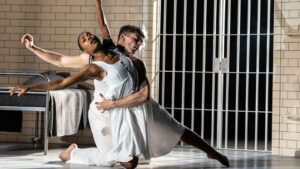
In general, it is a bit of a nightmare within the film world because you never have no control over the mix. You might have some input, possibly, but that can be a very disturbing experience if you’re not careful. With Matthew’s stuff, the sound is a chap called Paul [Groothius]. He has done most of the most of the shows with Matthew. He knows what we’re doing and so he would never get in my way. It’s never a problem. There are a lot of sounds. It’s very filmic and on stage really. I’m very happy with that. But the music has to be there for the narrative. Structurally it’s very important.
I mentioned earlier that you said that there were two things that you loved most. You said that your second favorite part was working with the musicians to record the score. What made recording this score for Romeo and Juliet unique amongst the other collaborations that you’ve had with your musicians for this work?
It was different, actually. If you can imagine Romeo and Juliet for 15 musicians, they have to be all soloists and they are at the top of their game. So like any performing artist who’s good, they like to show off. They like to display their skill and they enjoy it. When the music is as good as Prokofiev’s then you can’t keep them away actually.
One of my favorite credits of yours is on set conductor for Florence Foster Jenkins. I bring it up is because it’s a whole different look at what music is and how we hear it. How do you think the way you personally listen to music has evolved over the years, and how do you think it might be different than the way Matthew Bourne or myself or anyone else hears music?
I don’t know. I do remember I was completely baffled as a kid when people saw stories in the music. It’s really weird. I was studying and doing my stuff at school in my teens. It didn’t make a lot of sense to me. Now it sort of completely flipped the other way. It’s all about storytelling, but music has never given me images. What it does for me is give you emotions. For me music is about emotion. Nothing does it in the same way because it’s so abstract and it’s the abstract nature of it that makes it so powerful and, for what it’s worth, so dangerous for directors. It always makes an emotional impact for me. And that’s when it works. To sit in a theater and watch a thousand people responding to the emotions that we’re laying out, that’s enough for me.
To watch the full interview with Terry Davies, please go here.
Main Photo: Monique Jonas and Rory Macleod in Matthew Bourne’s Romeo and Juliet (Photo by Jonas Persson/Courtesy Center Theatre Group)





